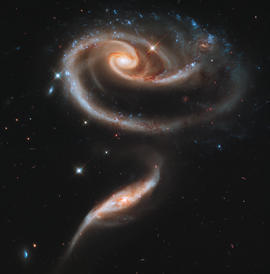What do galaxies look like in the young universe? Thierry Contini
le 22 déc 2017 de11h00à 13h002017/12/22 2017/12/22

The formation and evolution of large-scale structures in the universe is now quite well understood thanks mainly to the recent progress of cosmological simulations. However, the complex physical processes at the origin of the assembly of galaxies inside the dark matter halos remain very puzzling. How do galaxies accrete their gas to grow up via their star formation? What are the main mecanisms regulating this star formation at the galaxy scale? Do environment play a leading role in galaxy evolution? Large and deep surveys of the local and distant universe, tracking statistically the physical properties of galaxies over more than 10 Gyr, bring some answers to these questions. However, detailled studies of galaxies at different epochs are now mandatory to understand in fine the physical processes at the origin of the assembly of baryonic matter in the universe. 3D spectroscopy with the largest ground-based telescopes has proven to be a powerful tool to adress these fundamental questions, allowing detailled studies of galaxy physical properties at early epochs. I will review the last results in this field as well as the mid-term prospects focusing on high-redshift galaxies caught in the act of assembly!




